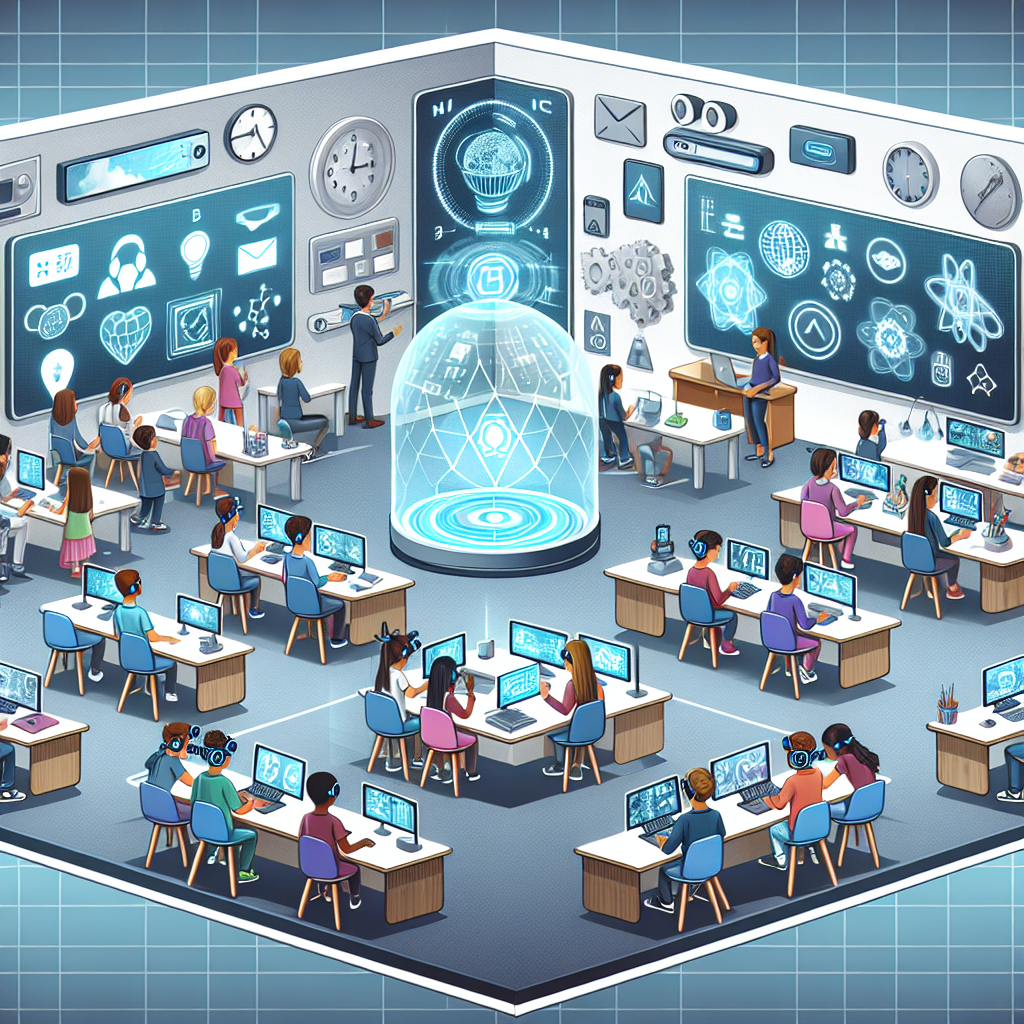The Future of K-12 Education: How AI is Shaping the Classroom of Tomorrow
Education is evolving at a rapid pace, with new technologies playing a key role in shaping the classroom of tomorrow. One of the most transformative technologies in education is artificial intelligence (AI), which has the potential to revolutionize the way students learn and teachers teach in K-12 schools. AI can personalize learning, automate administrative tasks, and provide valuable insights into student performance, making it an invaluable tool for educators and students alike.
AI in the Classroom
One of the most exciting applications of AI in the classroom is personalized learning. AI algorithms can analyze data on student performance, learning styles, and preferences to create personalized learning pathways for each student. This allows teachers to tailor instruction to individual students’ needs, helping them learn more effectively and efficiently.
AI can also automate administrative tasks, such as grading assignments and tracking attendance, freeing up teachers to focus on teaching. This can save teachers valuable time and reduce their workload, allowing them to spend more time on lesson planning and student engagement.
In addition, AI can provide valuable insights into student performance. By analyzing data on student progress and identifying patterns and trends, AI can help teachers identify struggling students early on and provide targeted interventions to help them succeed. This can improve student outcomes and help teachers better support their students.
Challenges and Opportunities
While AI offers many benefits for K-12 education, there are also challenges that need to be addressed. One of the main challenges is ensuring that AI is used ethically and responsibly. This includes ensuring that AI algorithms are fair and unbiased, and that student data is protected and used appropriately.
Another challenge is ensuring that teachers are equipped to use AI effectively in the classroom. This includes providing professional development and training on how to use AI tools, as well as ensuring that teachers have access to the necessary technology and support.
Despite these challenges, the opportunities that AI offers for K-12 education are vast. AI has the potential to revolutionize the way students learn and teachers teach, making education more personalized, engaging, and effective. By harnessing the power of AI, we can create a classroom of tomorrow that is better equipped to meet the needs of all students.
FAQs
Q: How is AI being used in K-12 education?
A: AI is being used in K-12 education in a variety of ways, including personalized learning, automated administrative tasks, and insights into student performance. AI algorithms can analyze data on student performance, learning styles, and preferences to create personalized learning pathways for each student. AI can also automate administrative tasks, such as grading assignments and tracking attendance, freeing up teachers to focus on teaching. In addition, AI can provide valuable insights into student performance, helping teachers identify struggling students early on and provide targeted interventions to help them succeed.
Q: What are the benefits of using AI in K-12 education?
A: The benefits of using AI in K-12 education are vast. AI can personalize learning, automate administrative tasks, and provide valuable insights into student performance. Personalized learning can help students learn more effectively and efficiently, while automating administrative tasks can save teachers time and reduce their workload. Insights into student performance can help teachers identify struggling students early on and provide targeted interventions to help them succeed. Overall, AI has the potential to revolutionize the way students learn and teachers teach in K-12 schools.
Q: What are the challenges of using AI in K-12 education?
A: While AI offers many benefits for K-12 education, there are also challenges that need to be addressed. One of the main challenges is ensuring that AI is used ethically and responsibly. This includes ensuring that AI algorithms are fair and unbiased, and that student data is protected and used appropriately. Another challenge is ensuring that teachers are equipped to use AI effectively in the classroom. This includes providing professional development and training on how to use AI tools, as well as ensuring that teachers have access to the necessary technology and support.
In conclusion, AI is shaping the classroom of tomorrow by personalizing learning, automating administrative tasks, and providing valuable insights into student performance. While there are challenges that need to be addressed, the opportunities that AI offers for K-12 education are vast. By harnessing the power of AI, we can create a classroom of tomorrow that is better equipped to meet the needs of all students.

